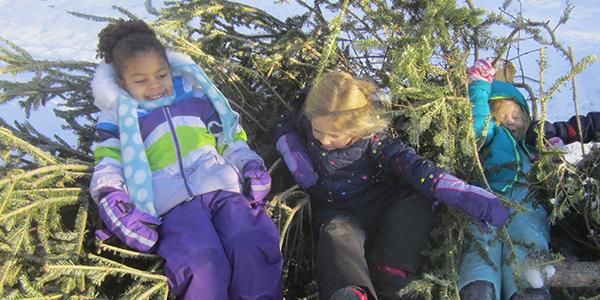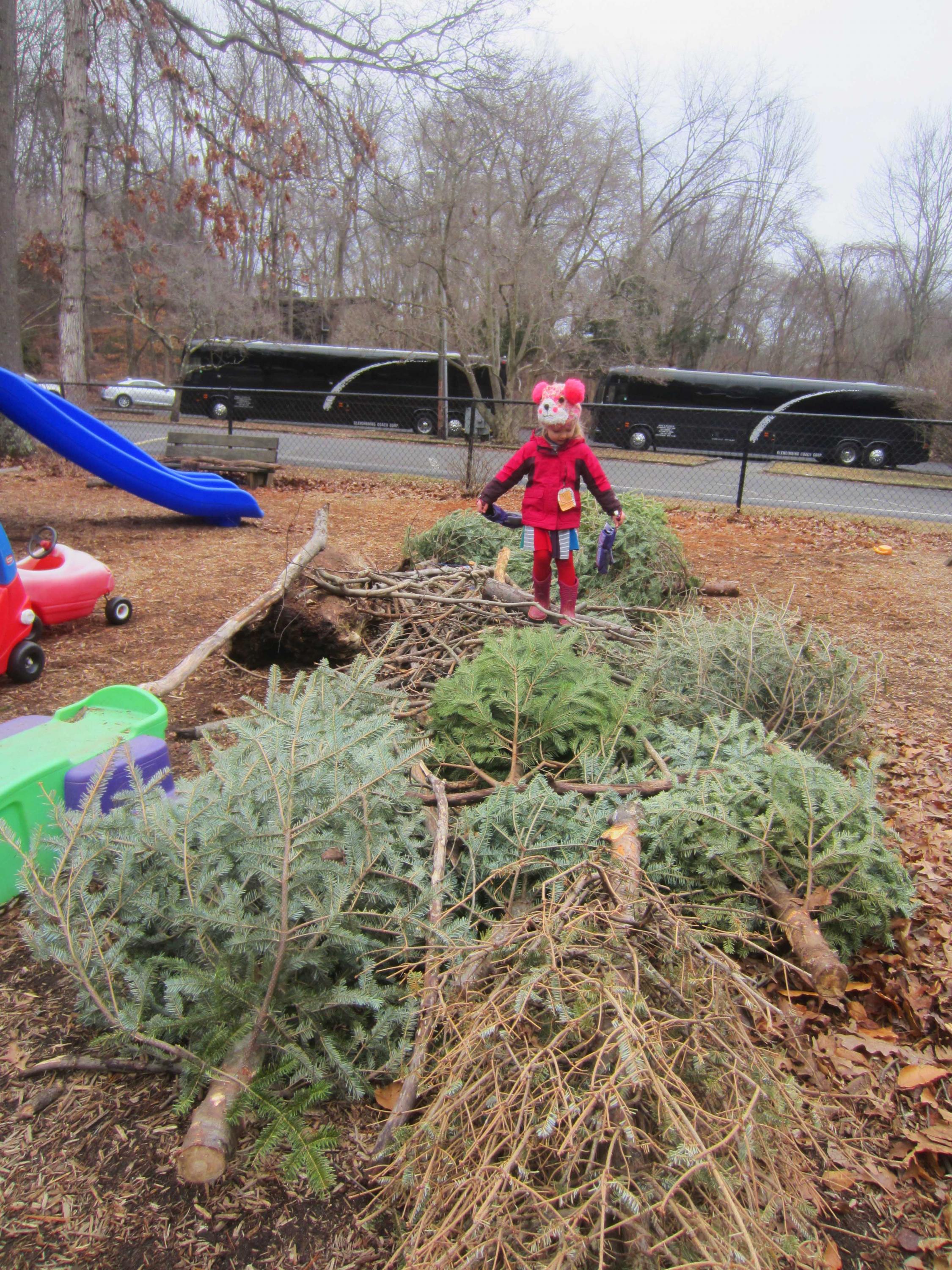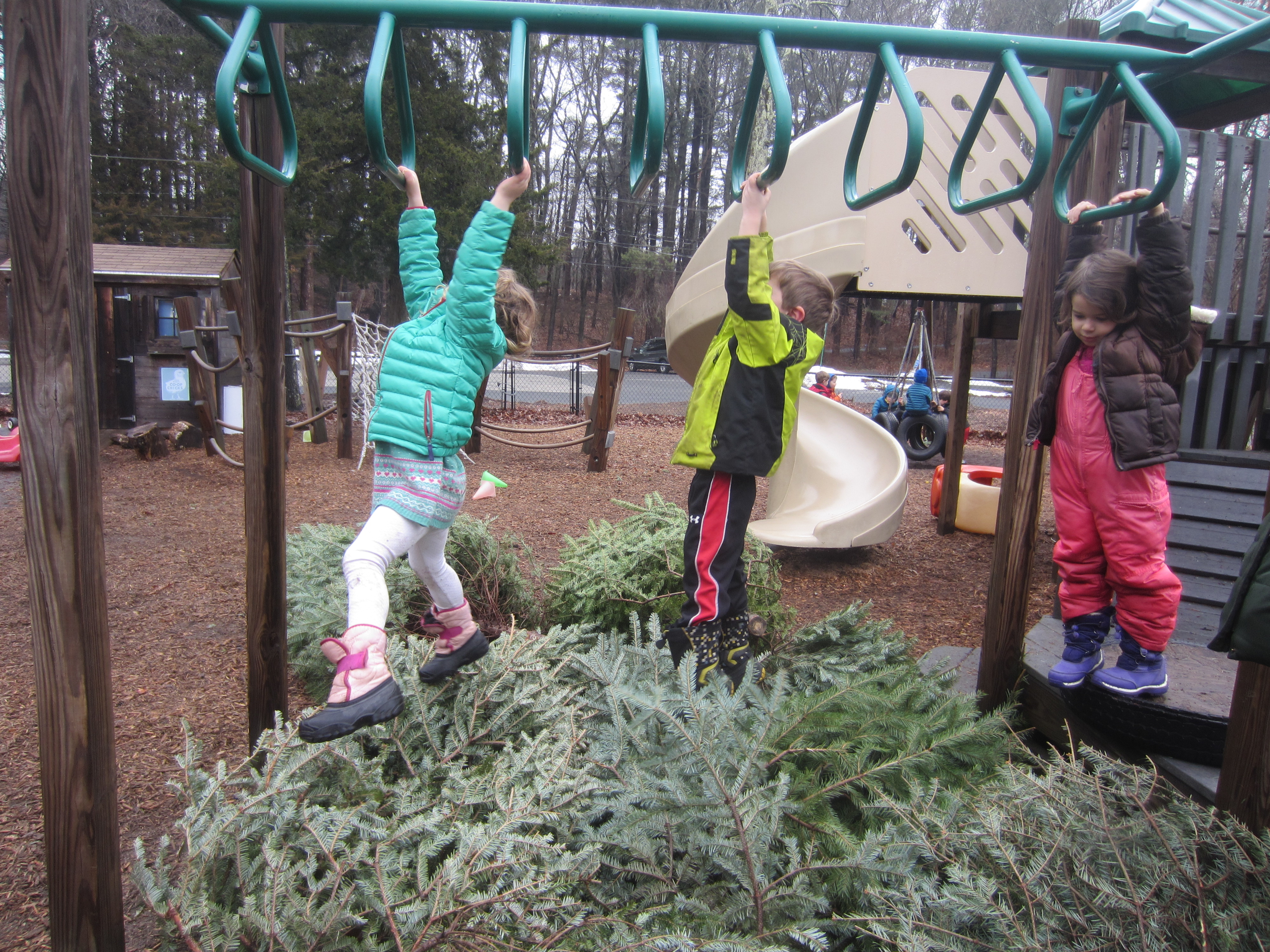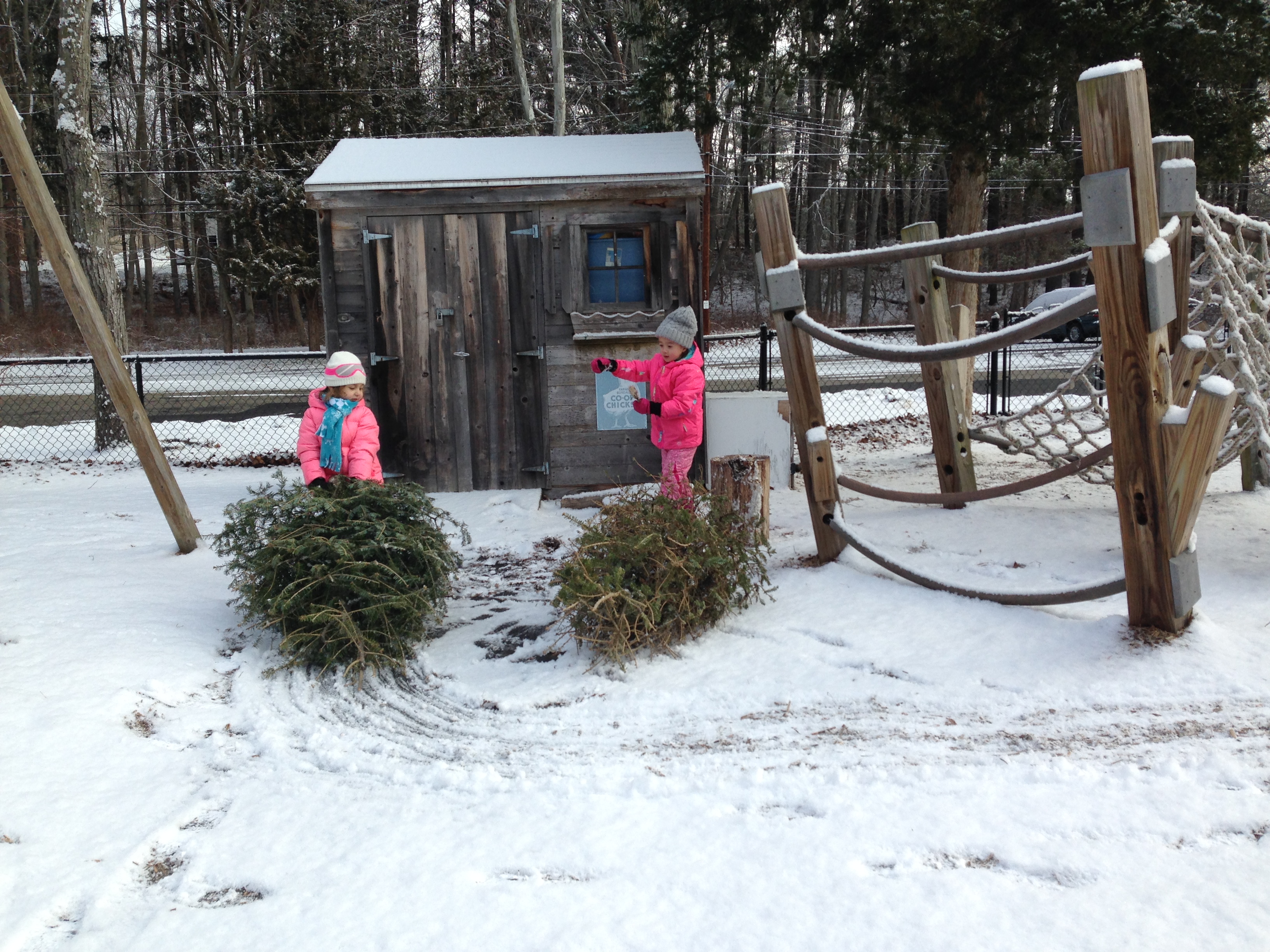New Year, New Use: Discarded Holiday Trees Transform the Playground

You are here
Take a deep breath and smell the air. If you are on our New England playground in January, you will likely smell an assortment of evergreen trees as the scent wafts through the chilly air.
Each year, we ask families to recycle their holiday trees for use on the playground. Our goal is to provide children with a new and unexpected play material. Teachers and a local Boy Scout troop also donate trees. We usually get about 15 to 20 trees: Douglas fir, balsam, and blue spruce, to name a few.
The trees are placed all over the playground, some lying down, some leaning against the play equipment. When children return to school after the winter break, they instantly notice that something is different. Many shades of green enliven the wintry brown playground, adding visual interest. The aroma is evident even before entering the space.

Birds’ nests to mountains: The trees through children’s eyes
When children first see the trees, they observe and ask questions like, Why are these here? and What are they for? They touch the needles, bounce on the trees’ springy branches, and move the trees from place to place.
Trees range from three to 12 feet in length. Some of the smaller trees come with plastic bases and can stand up by themselves; those trees can be moved around by a single child. The larger trees require collaboration, with children needed at each end of a tree to move it. Some of the places children take the trees include the sandbox, where they “plant” the trees; a wooden playhouse, filling it to capacity; the climbers, piling them on top and sliding them underneath; and a large spiral slide, requiring several children to push and pull—an impressive large motor undertaking!
As the children become familiar with the trees, more sophisticated play themes emerge.
For example, a group of children once decided to build a fort by using a wooden shed and a fence in a corner of the playground as the back walls of their structure. They created another wall by laying the trees end to end. From their fortress, leaders began to surface, sending enthusiastic volunteers to gather a variety of additional materials to enhance the structure: full-size and toy traffic cones, small riding vehicles, and fabric. “It’s our hideout!” they explained. The children’s play lasted a long time and was repeated on subsequent days.
Other children collaborated to make nests by placing trees in large circles. The children then pretended to be baby birds, hunkering down in their soft homes, “cheeping” to others who walked by.
On another day, children piled trees under the monkey bars. As they went hand to hand across the bars, their feet tickled the trees. When they completed the bars, the children dropped safely into the piled trees, which were a soft place to land. Each time the trees were jostled, a fragrant evergreen scent was released.
When leaned against a fence, the trees became mountains to climb. The children called to each other, “All the trees are going on the fence! Climb! Climb!” Careful teacher supervision was key to keeping this activity a safe one while children experimented.
Children in our area have observed adults using chain saws after storms have knocked down trees. Because of this prior experience, children used our toy chain saws to reenact sawing down trees, pressing their saws to the prone trees and making buzzing sounds: “I’m cutting the tree! Cut-cut-cut-cut-boom!”
Teachers have also used some of the trees to offer new play spaces. Our playground has a 12-foot cone-shaped hut made from small tree trunks. On one occasion, teachers leaned several of the donated trees around it, creating a cozy place. Soon, the children were having tea parties, sitting around a mock fireplace, and enjoying their private clubhouse.

Wrapping it up
As the trees begin to degrade, lose their needles, and turn brown, the children and teachers load them onto wagons and haul them to the woods. There, the trees break down further, providing shelter for small wildlife. The trees last approximately two months during cold, damp winters—less when the winters are warm and dry. The trees are available to play with until the early days of spring, when the daffodils start to come up. These experiences offer great opportunities for science activities, such as learning about how animals use fallen trees for shelter and the process of decomposition. The bleakest days of winter are made better by this creative addition to the children’s play space!

The Influence of Bev Bos
The idea of bringing trees to the playground was borrowed from Bev Bos, a longtime teacher, an author, and an advocate for play-based learning for preschoolers. She describes the experience in her 2005 book (coauthored with Jenny Chapman), Tumbling Over the Edge: A Rant for Children’s Play. At Bos’s California school, the teachers collected 40 to 50 trees. They dug holes and potted each tree so that they stood upright, appearing to grow right out of the ground. It was Bos’s belief—and we agree—that children need places to retreat to, to whisper, and to make nests. They are always looking to create hiding spaces for themselves. The trees provided ways to meet those needs. By adding trees to our playground, we created a whole new play environment.
 This article supports the following NAEYC Early Learning Program Accreditation standards and topic areas
This article supports the following NAEYC Early Learning Program Accreditation standards and topic areas







Photographs: courtesy of the author
Condie Collins Ward is an educator at the Westport Weston Cooperative Nursery School, in Connecticut. She holds a BFA from the University of Connecticut and a CDA credential from Norwalk Community College. Through her articles in TYC, Condie shares unique perspectives on children’s learning.